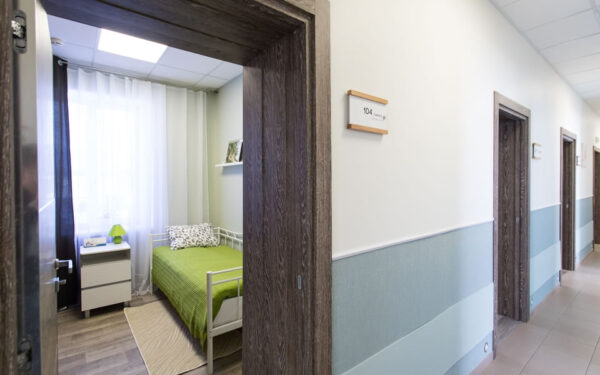Final Regulations Limit the 20% Pass-Through Deduction for Long-Term Care Facilities

The 2017 Tax Cuts and Jobs Act contained important changes for both business and individual taxpayers. Among the more onerous of the new rules is the limitation on the deductibility of business interest expenses incurred on real property and other operating trades or businesses. In the taxpayer-friendly column are the expanded 100% bonus depreciation rules, which allow for unlimited expensing of new and used capital assets, other than buildings and their structural improvements. Also favorable is the decrease in the top individual tax rate from 39.6% to 37%. Another potentially significant tax savings provision is the 20% deduction for net income from “qualified” pass-through entities.
Assisted Living Facility (ALF) and Skilled-Nursing Facility (SNF) businesses have been awaiting final clarification regarding their status as eligible trades or businesses for purposes of the 20% deduction from net income. The new provision under IRC Section 199A generally provides a deduction of 20% of net income related to Qualified Trade or Business Income (QBI) from pass-through entities, such as S corporations, partnerships, LLCs, and companies that operate as Schedule C and sole proprietorships. This deduction is subject to many limitations which could reduce the deduction based on other factors.
Also, certain industries included in the group of Specified Service Trades or Businesses (SSTB) will have limited deduction opportunities, if any, for their pass-through owners. Generally, only those owners at lower taxable income levels will benefit from this deduction. For 2018, the taxable income “threshold amounts” for purposes of the 20% deduction related to SSTB income are $157,500, or $315,000 in the case of a taxpayer filing a joint return.
For reference, a Specified Service Trade or Business is defined as:
“Any trade or business involving the performance of services in the fields of health, law, accounting… or any trade or business where the principal asset of such trade or business is the reputation or skill of one or more of its employees or owners.”
In January, 2019, the IRS issued final regulations providing guidance on the Section 199A deduction for tax years beginning after 12/31/2017. The rules build upon the proposed regulations issued earlier in 2018.
Reg. Sec. 1.199A-5 defines performance of services in the field of health as:
“…the provision of medical services by individuals such as physicians, pharmacists, nurses, dentists, veterinarians, physical therapists, psychologists and other similar healthcare professionals performing services in their capacity as such.”
The statute suggests that any amount of SSTB provided by a business taints the entire business as an SSTB. However, the proposed regulations provide a de minimis rule under which, for a taxpayer with gross receipts of $25 million or less and SSTB gross receipts no greater than 10% of total gross receipts, the entire business is not tainted. The percentage is reduced to 5% where gross receipts exceed $25 million. The final regulations clarify that this rule is a “cliff.” If the applicable threshold is exceeded, no portion of the SSTB is excluded under the de minimis rule.
In the preamble to the final regulations, the IRS acknowledges receiving comments to the proposed regulations, wherein “several commenters recommended that the definition of the performance of services in the field of health should differentiate between institutional health care providers (such as skilled nursing homes), which bill on a fee-for-service or per diem basis, versus health care providers who provide and bill for professional services (such as a physician’s practice).” While “the Treasury Department and the IRS agree that skilled nursing, assisted living, and similar facilities provide multi-faceted services to their residents,” the de minimis rule above will likely result in all long-term care facilities that provide medical services being treated as SSTBs and, thus, being generally ineligible for the 20% deduction, subject to the taxable income thresholds for the individual owners.
The tax rules do contemplate the possibility of one entity having multiple trades or businesses, where theoretically one could be an SSTB and the others would not, but the standards for establishing separate businesses are challenging. The minimum threshold would be the maintenance of complete and separable books and records. The preamble to the regulations indicates that while this is a necessary condition, it is not sufficient – there must be more factors that indicate a separate trade or business.
The one residential care facility example presented in the final regulation describes an arrangement wherein the taxpayer does not provide medical services directly or bill for such services, but instead, has independent healthcare organizations provide its residents medical and health services at the facility, including skilled nursing care, physical and occupational therapy, etc. Because those medical services are rendered directly by the independent healthcare providers to the residents, the residential facility is not found to be performing services in the field of health for purposes of the 199A deduction. This fact pattern will provide an opportunity for assisted living facilities to qualify for the deduction, subject to an analysis of the key factors related to the provision of health services.
Related Party Service and Leasing Arrangements
The final regulations also confirm that when another business entity renders services to a facility treated as an SSTB, or there is a lease arrangement between commonly controlled entities, the income of the service provider (management company) or the rental income of the lessor entity (”propco”) is treated as SSTB income with respect to the portion of income derived from the commonly controlled SSTB. Thus, the owners of these related businesses would also have limitations on their ability to benefit from the 20% deduction, unless their individual taxable income was below the taxable income threshold amounts. (Related parties are generally defined as those with 50% or more direct or indirect common ownership).
Now that the regulations are finalized, it appears that the owners of long-term care facilities will generally not benefit from the new 20% net income deduction if the facilities provide more than a de minimis level of medical services. It should be noted that this area of the new law could be subject to statutory modifications in the future.





